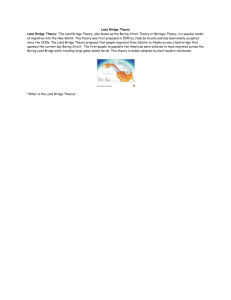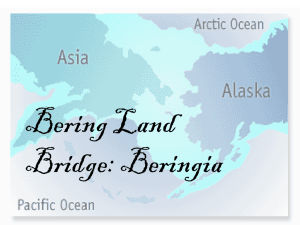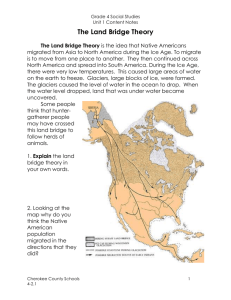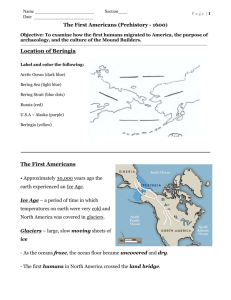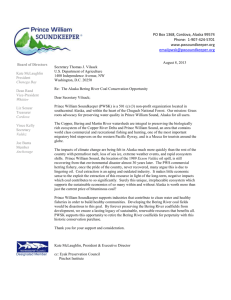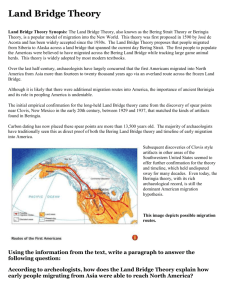First Americans Lived on Bering Land Bridge for
advertisement
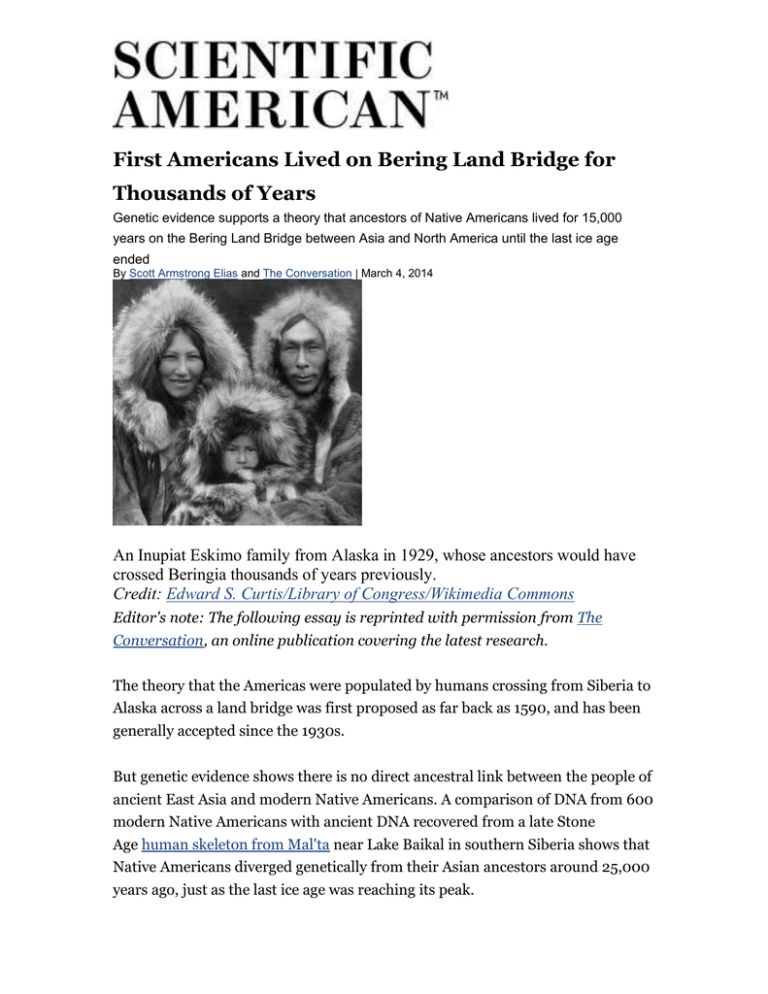
First Americans Lived on Bering Land Bridge for Thousands of Years Genetic evidence supports a theory that ancestors of Native Americans lived for 15,000 years on the Bering Land Bridge between Asia and North America until the last ice age ended By Scott Armstrong Elias and The Conversation | March 4, 2014 An Inupiat Eskimo family from Alaska in 1929, whose ancestors would have crossed Beringia thousands of years previously. Credit: Edward S. Curtis/Library of Congress/Wikimedia Commons Editor's note: The following essay is reprinted with permission from The Conversation, an online publication covering the latest research. The theory that the Americas were populated by humans crossing from Siberia to Alaska across a land bridge was first proposed as far back as 1590, and has been generally accepted since the 1930s. But genetic evidence shows there is no direct ancestral link between the people of ancient East Asia and modern Native Americans. A comparison of DNA from 600 modern Native Americans with ancient DNA recovered from a late Stone Age human skeleton from Mal'ta near Lake Baikal in southern Siberia shows that Native Americans diverged genetically from their Asian ancestors around 25,000 years ago, just as the last ice age was reaching its peak. Based on archaeological evidence, humans did not survive the last ice age’s peak in northeastern Siberia, and yet there is no evidence they had reached Alaska or the rest of the New World either. While there is evidence to suggest northeast Siberia was inhabited during a warm period about 30,000 years ago before the last ice age peaked, after this the archaeological record goes silent, and only returns 15,000 years ago, after the last ice age ended. So where did the ancestors of the Native Americans go for 15,000 years, after they split from the rest of their Asian relatives? Surviving in Beringia As John Hoffecker, Dennis O'Rourke and I argue in an article for Science, the answer seems to be that they lived on the Bering Land Bridge, the region between Siberia and Alaska that was dry land when sea levels were lower, as much of the world’s freshwater was locked up in ice, but which now lies underneath the waters of the Bering and Chukchi Seas. This theory has become increasingly supported by genetic evidence. Credit: NOAA/Wikimedia Commons The Bering Land Bridge, also known as central part of Beringia, is thought to have been up to 600 miles wide. Based on evidence from sediment cores drilled into the now submerged landscape, it seems that here and in some adjacent regions of Alaska and Siberia the landscape at the height of the last glaciation 21,000 years ago was shrub tundra – as found in Arctic Alaska today. This is dominated by dwarf shrubs such as willow and birch, only a few centimeters tall. There is evidence that there may have been some stands of spruce trees in these regions too in some protected microhabitats, where temperatures were milder than the regions around. The presence of a particular group of beetle species that live in shrub tundra habitats today in Alaska, and are associated with a specific range of temperatures, also supports the idea that the area was a refuge for both flora and fauna. This kind of vegetation would not have supported the large, grazing animals – woolly mammoth, woolly rhino, Pleistocene horses, camels, and bison. These animals lived on the vegetation of the steppe-tundra which dominated the interior of Alaska and the Yukon, as well as interior regions of northeast Siberia. This shrub tundra would have supported elk, perhaps some bighorn sheep, and small mammals. But it had the one resource people needed most to keep warm: wood. The wood and bark of dwarf shrubs would have been used to start fires that burned large mammal bones. The fats inside these bones won’t ignite unless they are heated to high temperatures, and for that you need a woody fire. And there is evidence from archaeological sites that people burned bones as fuel – the charred remains of leg bones have been found in many ancient hearths. It is the heat from these fires that kept these intrepid hunter-gatherers alive through the bitter cold of Arctic winter nights. Escape to America The last ice age ended and the land bridge began to disappear beneath the sea, some 13,000 years ago. Global sea levels rose as the vast continental ice sheets melted, liberating billions of gallons of fresh water. As the land bridge flooded, the entire Beringian region grew more warm and moist, and the shrub tundra vegetation spread rapidly, out-competing the steppe-tundra plants that had dominated the interior lowlands of Beringia. While this spelled the end of the woolly mammoths and other large grazing animals, it probably also provided the impetus for human migration. As retreating glaciers opened new routes into the continent, humans travelled first into the Alaskan interior and the Yukon, and ultimately south out of the Arctic region and toward the temperate regions of the Americas. The first definitive archaeological evidence we have for the presence of people beyond Beringia and interior Alaska comes from this time, about 13,000 years ago. These people are called Paleoindians by archaeologists. The genetic evidence records mutations in mitochondrial DNA passed from mother to offspring that are present in today’s Native Americans but not in the Mal'ta remains. This indicates a population isolated from the Siberian mainland for thousands of years, who are the direct ancestors of nearly all of the Native American tribes in both North and South America – the original “first peoples”.
